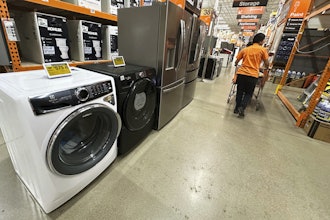
 Dan Stoll
Dan StollThe supply chain industry is hitting a turning point. News broke that the Amazon-operated logistics service “Shipping With Amazon” will eventually cut out its reliance on shipping partners. Once this service passes its trial stage, Amazon plans to extend deliveries to include third-party sellers.
Amazon has always found ways to improve its business, so it’s not unusual that the company announced this forward-thinking development. The company has already produced its own freight system and Amazon Key, so it’s no surprise that it’s taking control of additional touchpoints in the delivery process. But now that Amazon will offer shipping service to other businesses as well as their customers, what will this mean for the competition?
As of now, FedEx remains hopeful that Amazon won’t take away too much of their business, but USPS is not as confident. These staple companies have been relying on their traditional shipping methods for years, but it may be time for a change. In order to maintain a competitive edge, these rivals will have to retire manual strategies and invest in automation.
A Logistics Management study found that 43 percent of supply chain respondents partially use automation to run their businesses. Over the next few years, more than half of those surveyed want to implement even more automated processes to increase efficiency and order accuracy. As more businesses see the benefit, supply chain automation is evolving from a rising trend to the general norm.
Amazon cannot sever ties with its current partners today, but its end-to-end solution will eventually become a stand-alone shipping entity. This should not be a cause for panic (yet); competitors should re-evaluate how they can use automation to keep up with Amazon’s technology-driven services.
Technology Investments: How Implementation Will Improve the Work Day
The overlap between manufacturing, distribution and transportation provides opportunities for automation to target linkages in delivery management that could be performed faster. This can remove stubborn bottlenecks between several functions and create smoother centralized processes for a business.
Traditional carriers should increase their investment in data optimization and predictive analytics to attain these benefits to stay competitive, but some businesses are slow to warm up to the idea. Employees can be apprehensive that their jobs will be overtaken by automation, but this is not the case. Automation can release employees from tedious tasks that expend much of their workday and give them more time to focus on initiatives that will increase value for the entire department. While automation provides better speed and agility to work processes, employees can harness their human insights that are necessary to put the enterprise a step ahead of the competition.
Stubborn Complications: How Automation Can Relieve Top Problem Areas
So what does logistics automation actually provide? When integrated correctly, automation jumpstarts many benefits to help the company’s bottom line:
- Reduction of expensive errors: Investment supply chain automation is a considerable fiscal decision, and it will pay off its price quicker than expected. Inefficiencies are costly, but automation can eliminate necessary but time-consuming basic administrative and checklist tasks. Errors can also be diminished, including computational mistakes or data entry blunders that are difficult for employees to catch. When these problems are detected more often, businesses can avoid payments for second-time shipping or rushed delivery rates to appease upset customers, saving both time and money.
- Improved Employee Compliance: Tracking business progress can require intense documentation that workers struggle to constantly update. For example, contract employees in manufacturing plants typically work on an order basis. Hundreds of work order forms are created and sent to the contractor to prove that these orders were properly fulfilled, but it’s almost impossible to manually monitor the completion of every task. Automation can provide a mobile workflow solution that requires employees to enter key information on their device every time a job is completed. This provides an efficient strategy to monitor employee performance and an automatic business report that is updated immediately.
- Upgraded Speed: Customers want goods as soon as possible, so it’s no surprise that this is the most rewarding factor of automation. With less time allocated to manufacturing and freight tasks, deliveries can be made faster. In turn, this creates more bandwidth to take on more orders or projects that could expand the business without additional costs.
- More Visibility: In process automation, every detail is recorded. Companies are never at a loss when it comes to finding ways to take data and turn it into something actionable. For example, bottlenecks originating from either human or system sources can be easily identified and addressed. This has a greater effect by reducing compounding issues that go unnoticed.
A plan to automate will be essential for the traditional supply chain players to remain in the game. It should go without saying that all industries, specifically logistics, should be looking to automate this year, but it clearly hasn’t been a priority to legacy shipping providers. While the industry continues to progress technologically, competitors can integrate automation for background processes while employees focus on what they do best.
Dan Stoll is a Technical Product Manager at Nintex.






















